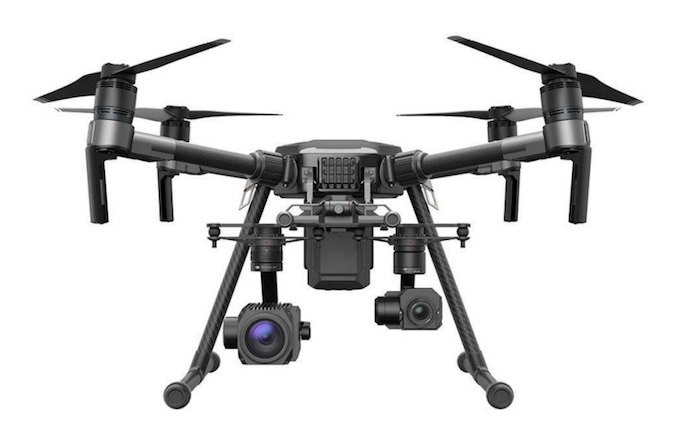Police to spend $90K for two night-vision drones
By Sissi De Flaviis Vivas
The Ottawa Police will be adding drones to their investigative arsenal later this spring.
The high-flying technology is intended to reduce the force’s reliance on the Ontario Provincial Police’s fleet, Ottawa councillor Tim Tierney said earlier this month after the announcement was made by the Ottawa Police Services Board.
Tierney said the drones, also referred to as remote piloted aircraft systems (RPAS), are capable of surveying large areas of land and include night vision.
“Up to now, we have had to go ahead and make use of the Ontario Provincial Police based on their availability,” Tierney said.
Sandy Smallwood, vice-chair on the police board, described one incident in which the use of drones was critical. An elderly man had walked from his farmhouse into a cornfield during an extremely cold night. The ground was frozen so there were no footsteps to follow.
“(The police) could not determine which direction to go,” Smallwood said. But with the use of a drone from the OPP, they were able to find the missing man by using heat sensors.
Besides searching for missing people, the drones will also be used to map accident scenes or for three-dimensional modelling to plan construction sites and survey areas, Smallwood said.
The board approved the plan to purchase two drones by March.
The two devices will cost $51,021, with an additional $23,000 earmarked for the software and $7,000 more for training.
Th overall one-time cost of $89,901 will be covered by Safer Roads Ottawa Funding, a community partnership focused on preventing death or serious injuries in Ottawa, said Smallwood.
During a meeting on Feb. 7, Smallwood said it makes sense to use drones for safety reasons, but he expressed some concerns regarding the potential invasion of privacy in people’s backyards.
However, he was reassured that the drones could only fly above someone’s property in the event there was a missing person or if police officers were trying to track down a criminal.
“I think there are risks associated in terms of invasion of privacy, but there are rules and regulations in place which I think are adequate,” Smallwood said. “It will be the same as what exists currently, which is they could not go over into an area where people might expect privacy without a necessary warrant.”
Smallwood also raised a concern about the drones being used proactively to target certain individuals or groups, just like carding of particular racial groups or members of specific neighbourhoods. But police officials said drones will only be used reactively in events involving missing persons or road safety.
Smallwood said local citizens will be advised whenever drones are being flown overhead.
Jeremy Laliberte, a mechanical and aerospace engineering professor at Carleton University, said there is a lot of training required to safely operating drones, which typically have a maximum flying time of about 28 minutes.
“Whether the software is easier or not, it does not matter. It is like driving a car,” he said. “There is a certain amount of training you need, regardless of the type of car you learn or are planning to purchase.”
With good care, drones can last for years, said Laliberte.
So far, no budget has been set aside for replacement or repairs if needed.
“I think it’s going to be a massive benefit to our city,” said Tierney, “and I’m glad we are catching up to other municipalities.”

